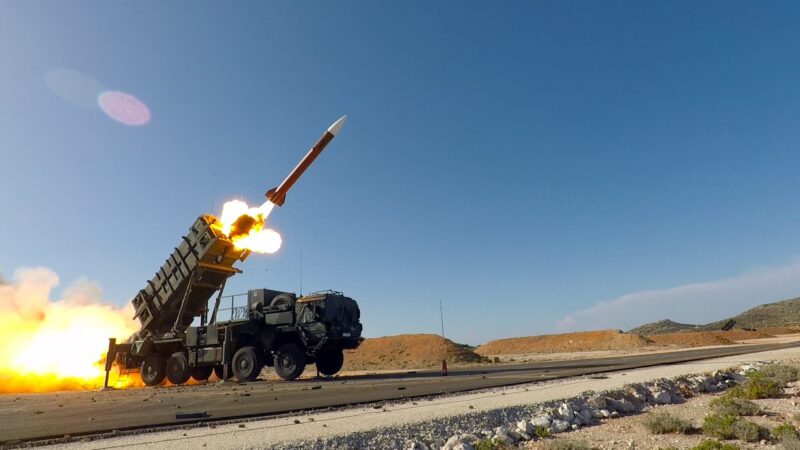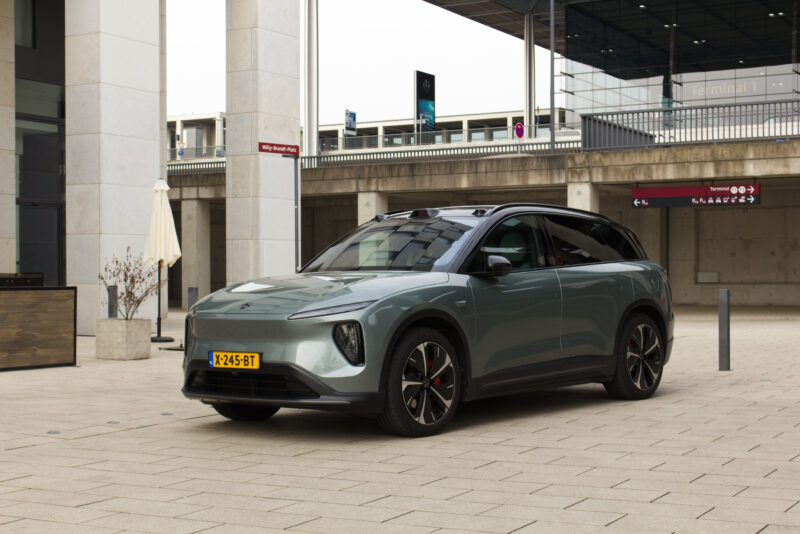- Located on New York City’s Rockaway Peninsula, Fort Tilden is a former US Army base that housed nuclear missiles during the Cold War.
- Remnants of wartime structures remain, including towering gun batteries and crumbling artillery pieces.
- It’s steps from the beach, where crowds congregate in the summer, but its battlements are hidden by thickets of coastal vegetation.
- Here’s what it’s like inside.
- Visit Insider’s homepage for more stories.
Steps from several of New York City’s busiest beaches, and hidden by tangled overgrowth studded with poison ivy, are the dystopian remains of a US Army base that once housed Cold War-era nuclear missiles.
Fort Tilden is tucked between bustling seaside communities on the Rockaway Peninsula, where city beachgoers flock in the summertime. The site dates back to the War of 1812, but major fortifications weren’t built until the US entered World War I in 1917 – the same year that it was named after former New York governor Samuel J. Tilden.
Batteries and artillery pieces were quickly erected, and during World War II, they were casemated to better withstand aerial bombing. When the Cold War rolled around, anti-aircraft guns and nuclear Nike Missiles were added to the arsenal.
From the shore, none of the towering gun batteries are visible. A former army bathhouse – gutted, sand-filled, and located right on the dunes – was demolished in 2016. Unless you’re actively looking for a glimpse of Fort Tilden’s military history, it can be easy to miss altogether.
There are millions of visitors to the Rockaways each summer, but the trails that snake through the rugged coastal scrubland, connecting the abandoned bunkers, are often empty. Here's what it's like inside.
Fort Tilden is nestled on the narrow strip of the Rockaway Peninsula, flanked by bustling beach communities.
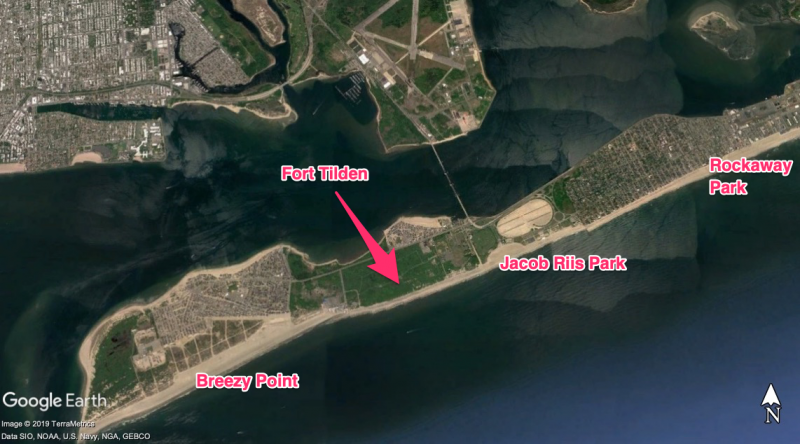
The former army outpost is accessible from Brooklyn and Queens via the Marine Parkway Bridge, Cross Bay Boulevard, or the A train.
The former army installation is accessible by car and by bus, but the ideal way to travel through its labyrinthine layout is by bike.
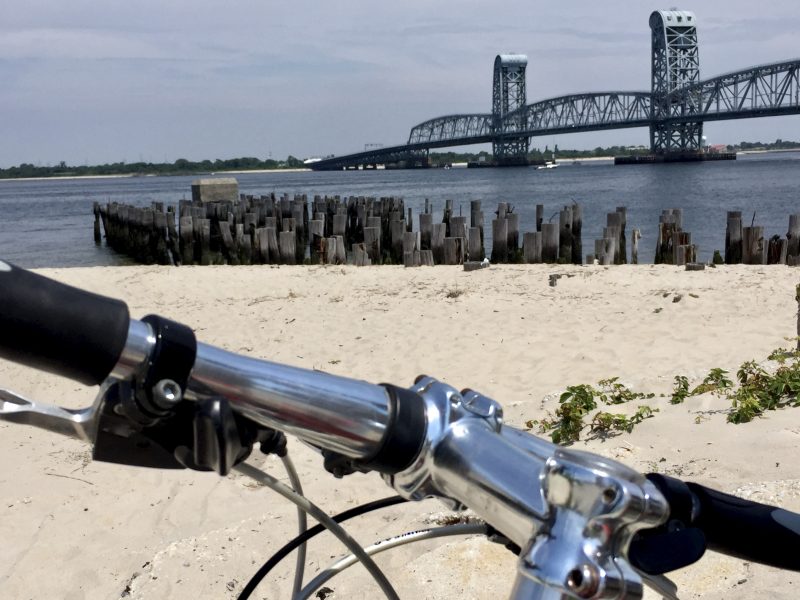
Traversing the base is faster and easier on two wheels, but some of the gravel and dirt roads can be hard on bike tires.
Before it became a summer hotspot, the area was a military outpost housing artillery, ammunition, and later, nuclear missiles. During World War II, the base's two cannons — known as 16-inch M1919 guns — were casemated to protect them against aerial bombing.
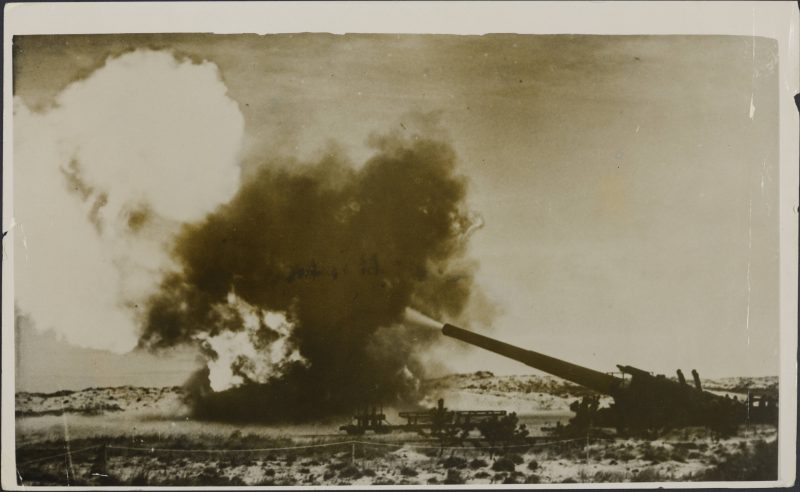
Every cannon shot cost $3,000, and a crew of 36 manned each cannon.
The Cold War brought Nike Missiles to Fort Tilden — but in 1974, the site was decommissioned by the army and turned over to the National Park Service.
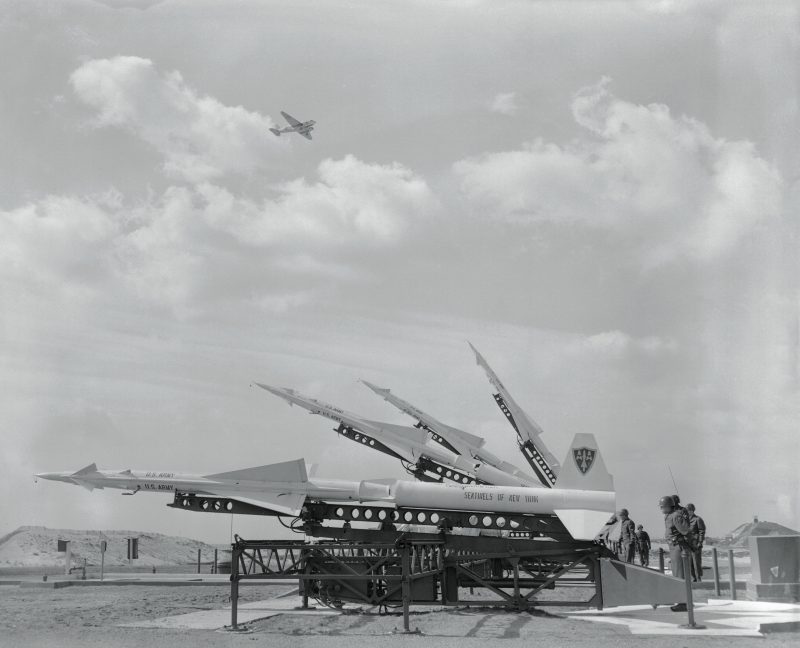
The Nike missiles were part of the defense system in place to protect the New York metropolitan area from air attacks.
The massive cannon casemates, pictured here in 1978, still stand today.
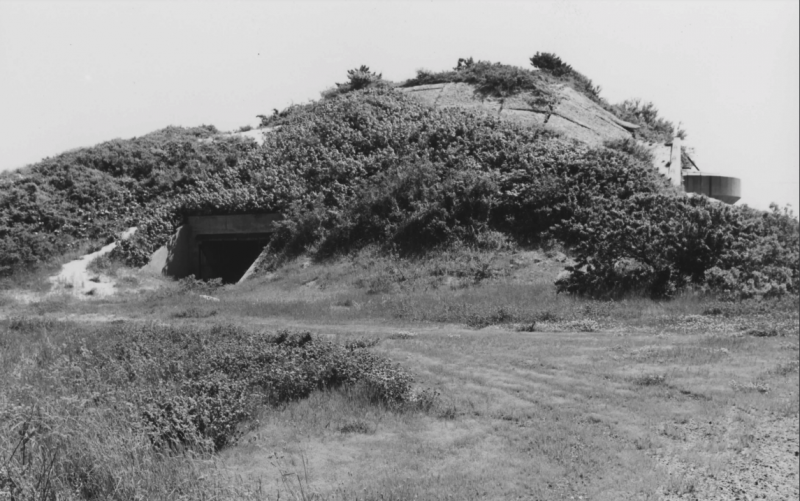
The casemates, which are nearly identical and located just 1,000 feet apart, are collectively known as Battery Harris.
From the beach, which is relatively peaceful compared to the adjacent Jacob Riis Park, the wartime architecture is concealed by thickets of coastal overgrowth.
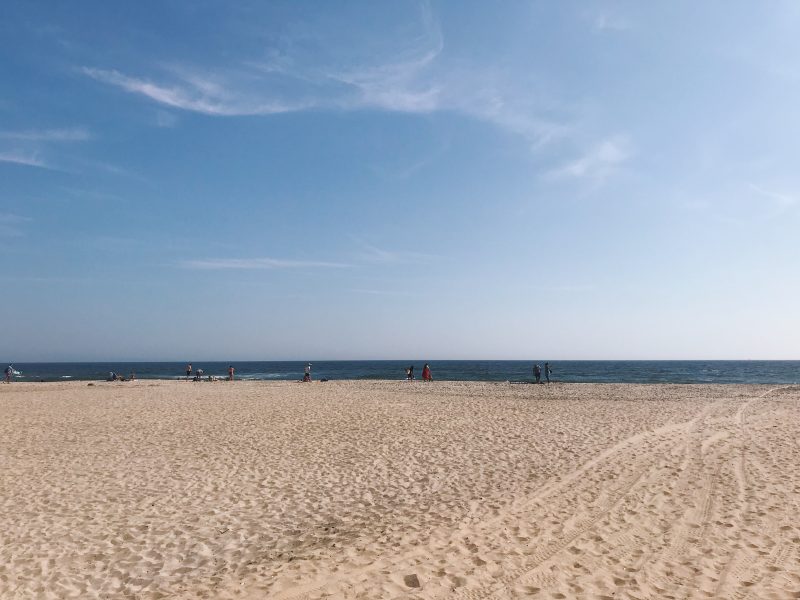
The beach at Fort Tilden has become popular on summer weekends, but not nearly as much as the neighboring Jacob Riis Park, another beach managed by the National Park Service known as "The People's Beach."
A painted American flag, peeking out from the eastern end of the beach, is all that remains of the entrance to Battery 220, an installation that was designed to hold two 6-inch guns but was never finished or armed.
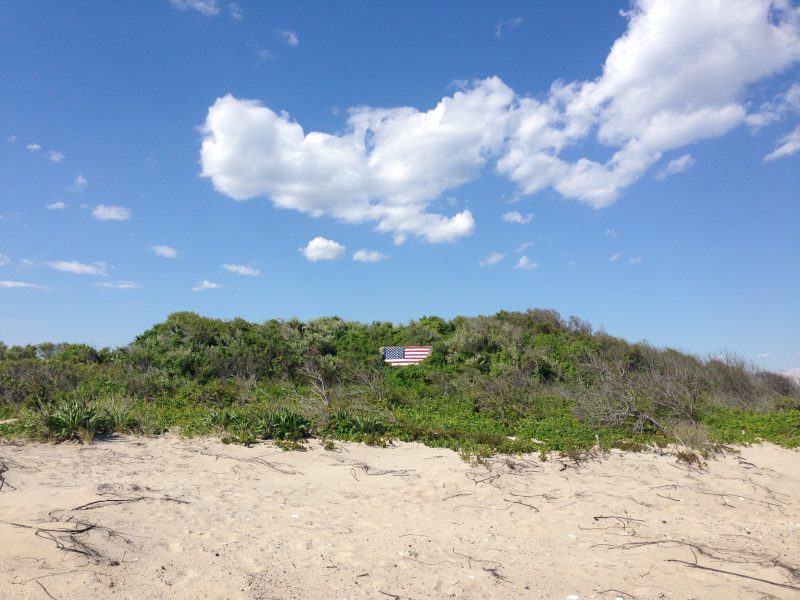
Three 6-inch gun casemates were constructed in a line along the beach. Battery 220, the northernmost of the three, is thought to be contemporary with Battery Harris, constructed in 1924.
An abandoned army bathhouse still sat on the beach as recently as 2016, but was razed that year due to instability caused by Hurricane Sandy in 2012.
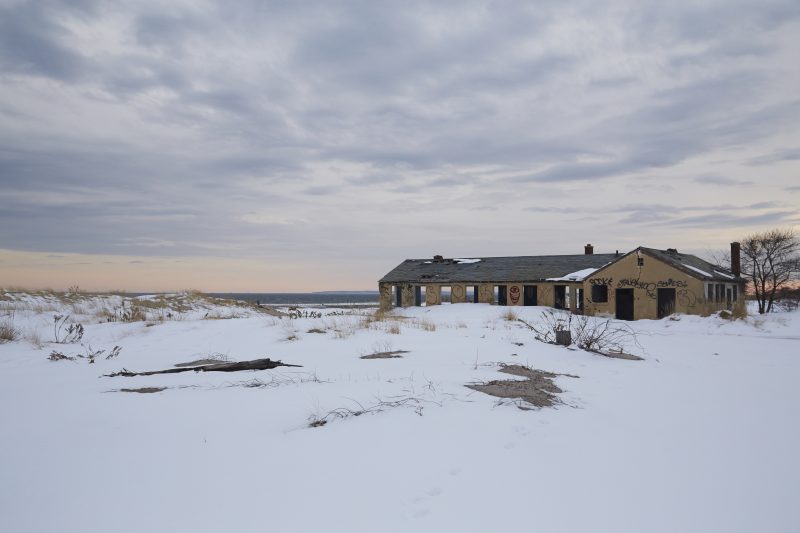
Before the facility was razed, it was given a send-off by German artist Katharina Grosse, who spraypainted the building red and white for MoMA PS1.
Behind the beach a maze of unmarked trails cut through the dense coastal scrubland.
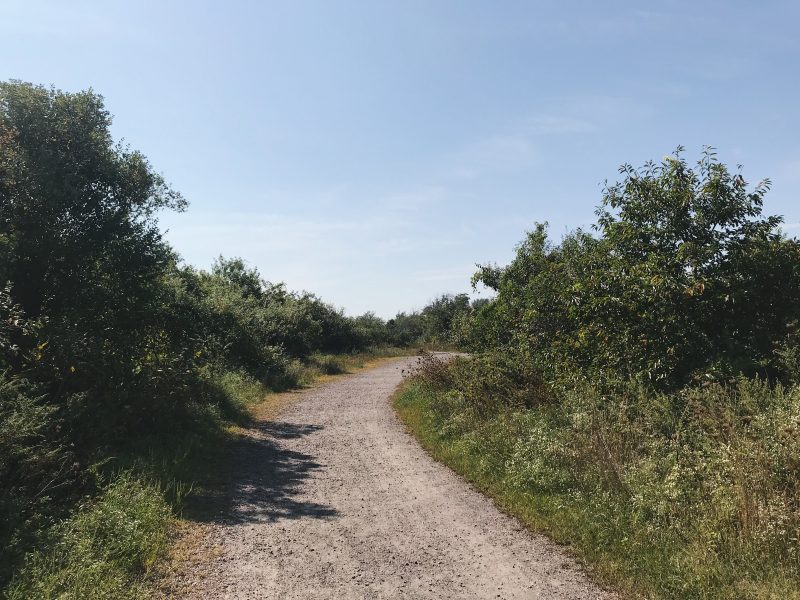
Following any of the paths almost certainly means encountering something something interesting.
Following the paths means glimpsing abandoned army structures, many used to store ammunition, choked by vegetation.
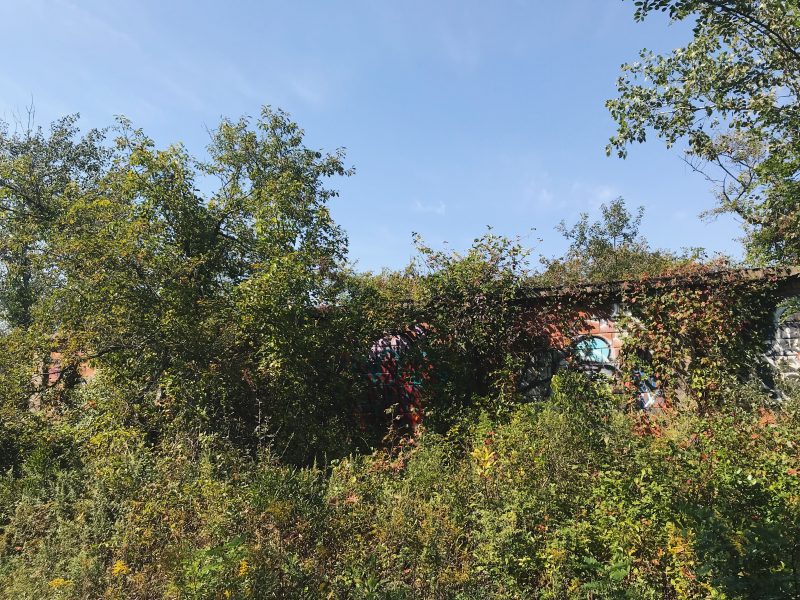
A number of storage magazines were built to support the anti-aircraft batteries at Fort Tilden.
Forgotten construction materials and vestiges of artillery mounts are being reclaimed by the landscape.
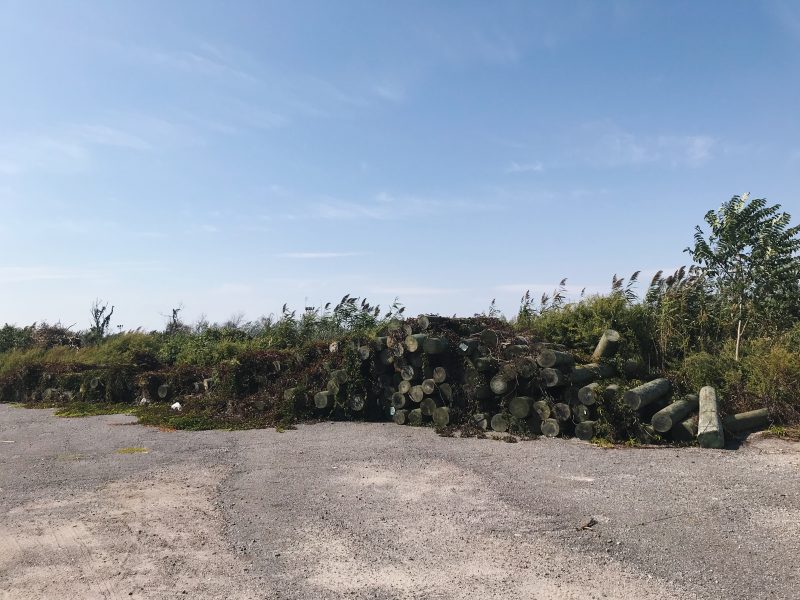
Fragments of concrete, wood, and rusted steel are common sights at Fort Tilden.
Some old warehouses are still standing, and installation artists like Yayoi Kusama have used them as sites for their work.
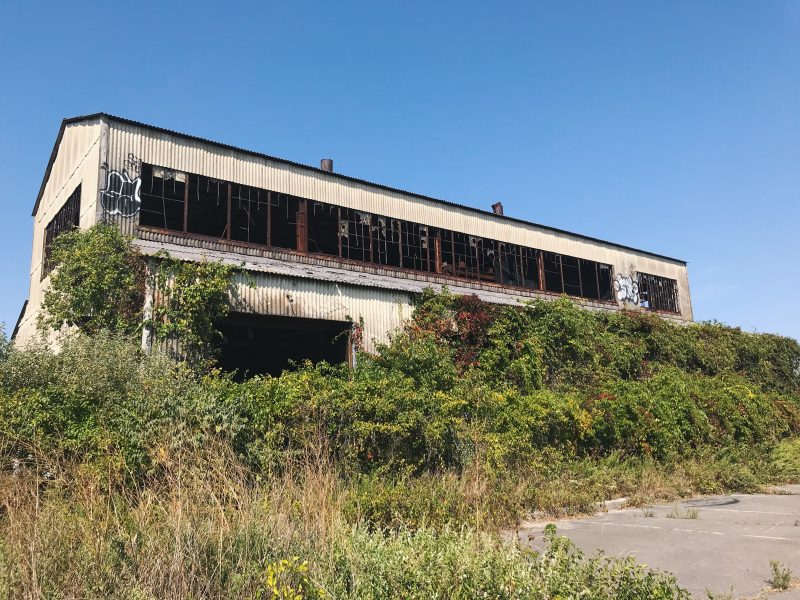
This warehouse, once used to store and repair trains, has been host to works by contemporary artist Yayoi Kusama and "punk poet laureate" Patti Smith - herself a Rockaway resident.
Every conceivable surface has been tagged by graffiti artists, though the area is often deserted.
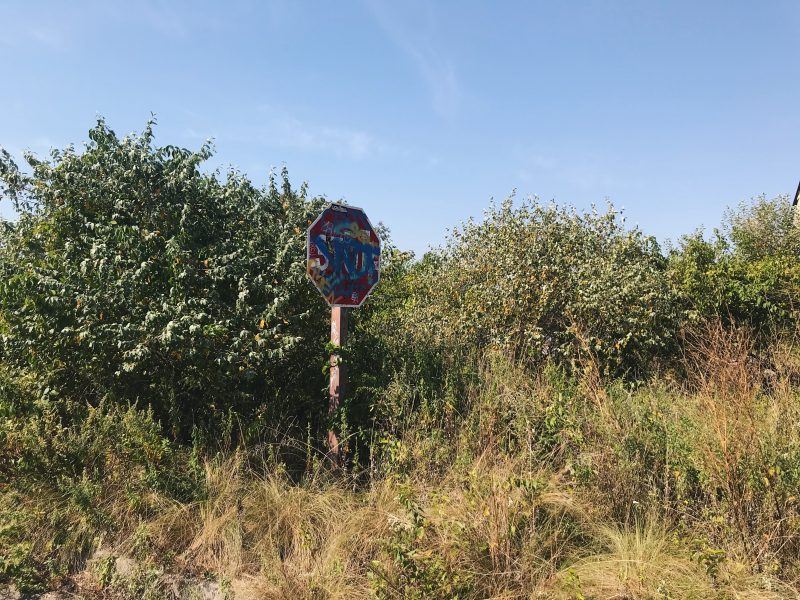
Faded "ONLY GOV VEHICLES" and "DO NOT ENTER" signs stand by some of the roads on the base.
Battery Harris East, which housed one of the base's two 16-inch M1919 guns, is masked by greenery until you round a bend.
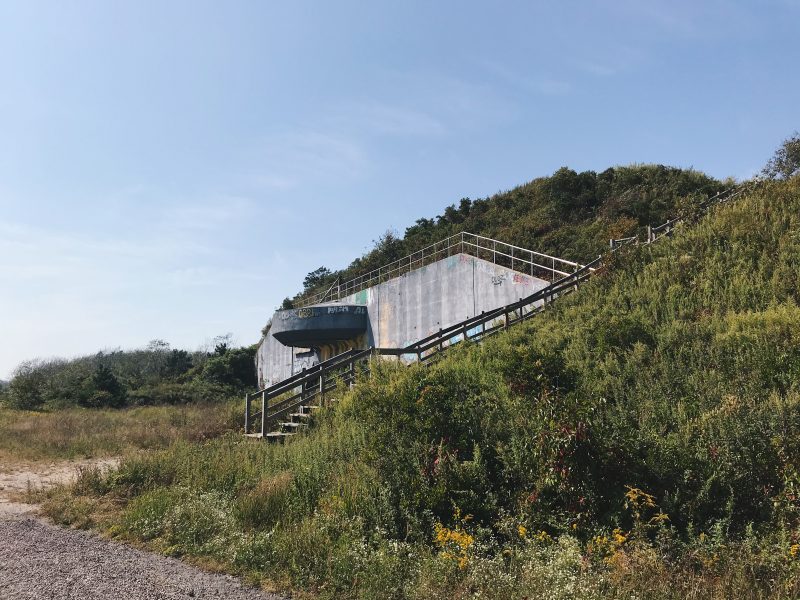
Despite the strange, dystopian appearance of the bunkers, it's easy to see how well they were camouflaged.
The 16-inch gun mounted here could turn 360 degrees and fire at a range of more than 26 miles — far enough to reach Long Island Sound.
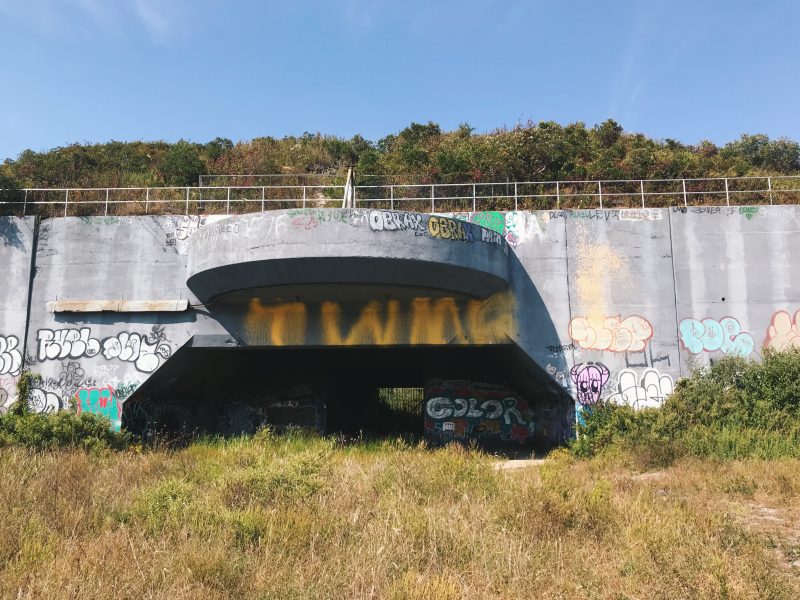
The casemates that housed the cannons are both approximately 300 feet long and 30 feet high.
After the National Park Service acquired the site, they installed a staircase that visitors can take to the top of the bunker.
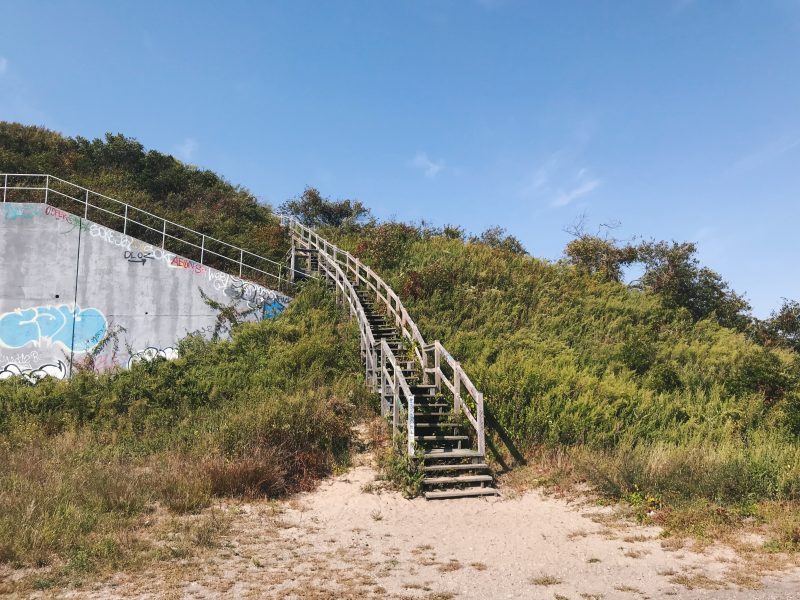
It's hard to resist any opportunity to clamber atop an abandoned military fortress.
The stairs lead to a viewing platform that, on clear days, can be used to observe Brooklyn, Queens, Manhattan, and the expanse of the Atlantic.
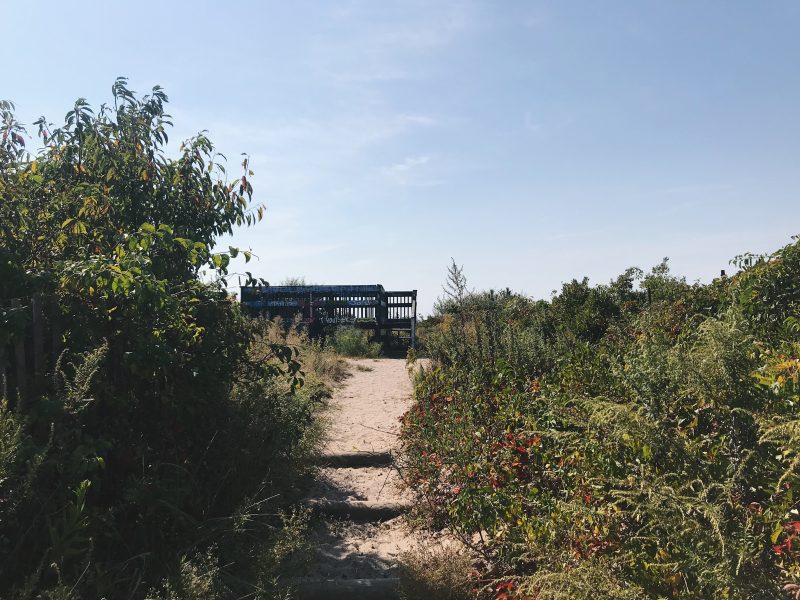
On this particular day, both the batteries and the viewing platform were completely empty.
As nature has slowly taken back the former army base, it has become a prime spot for birding. Some of New York's most endangered shorebirds, such as the piping plover, nest in Fort Tilden's dunes.
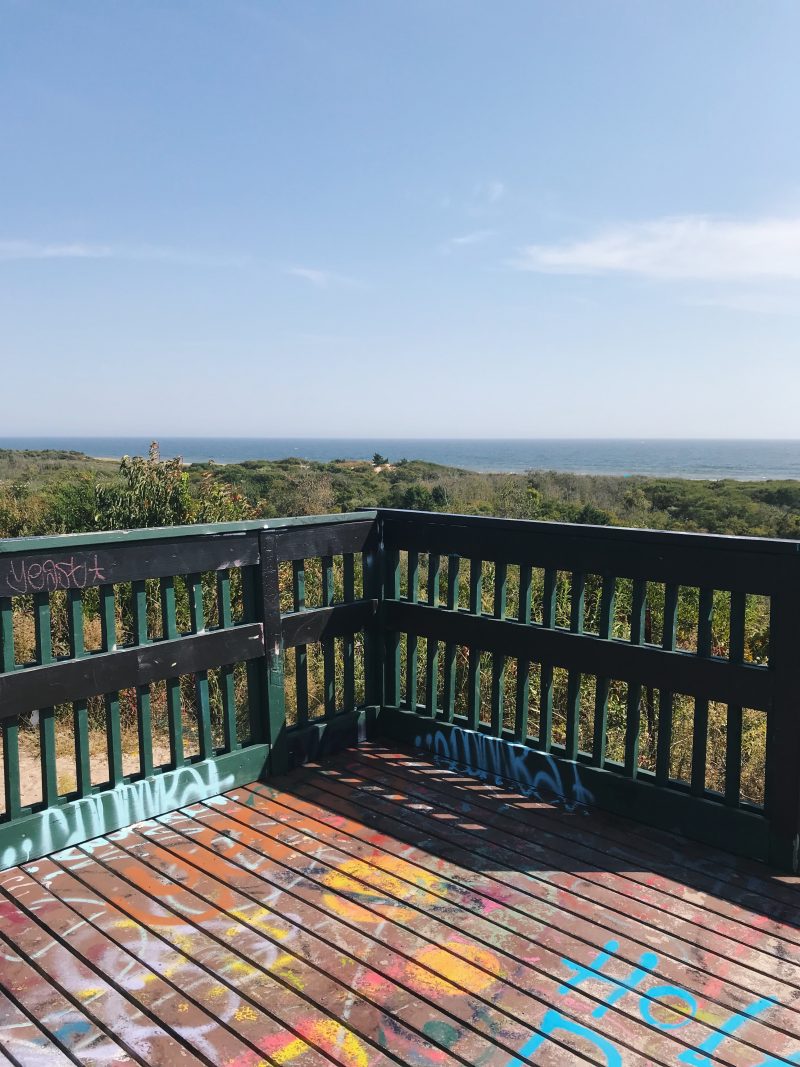
Warning signs are often posted around Fort Tilden beach when certain seabirds are nesting.
Battery Harris West, which housed the site's other 16-inch M1919 gun, is further down the gravel path.
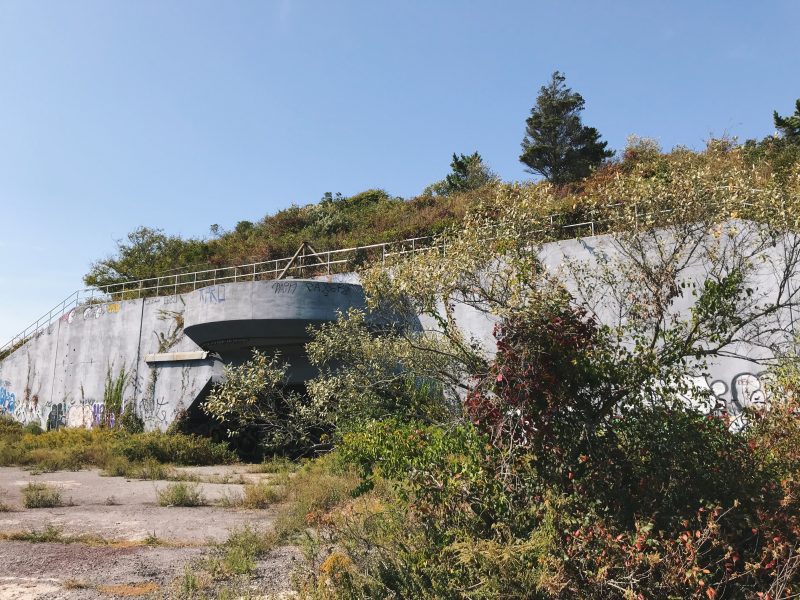
It's more dilapidated and less graffiti-coated than the other casemate.
In addition to offering protection from an air attack, the concrete casemates limited the rotation capacity of the cannons, preventing them from being turned on Manhattan.
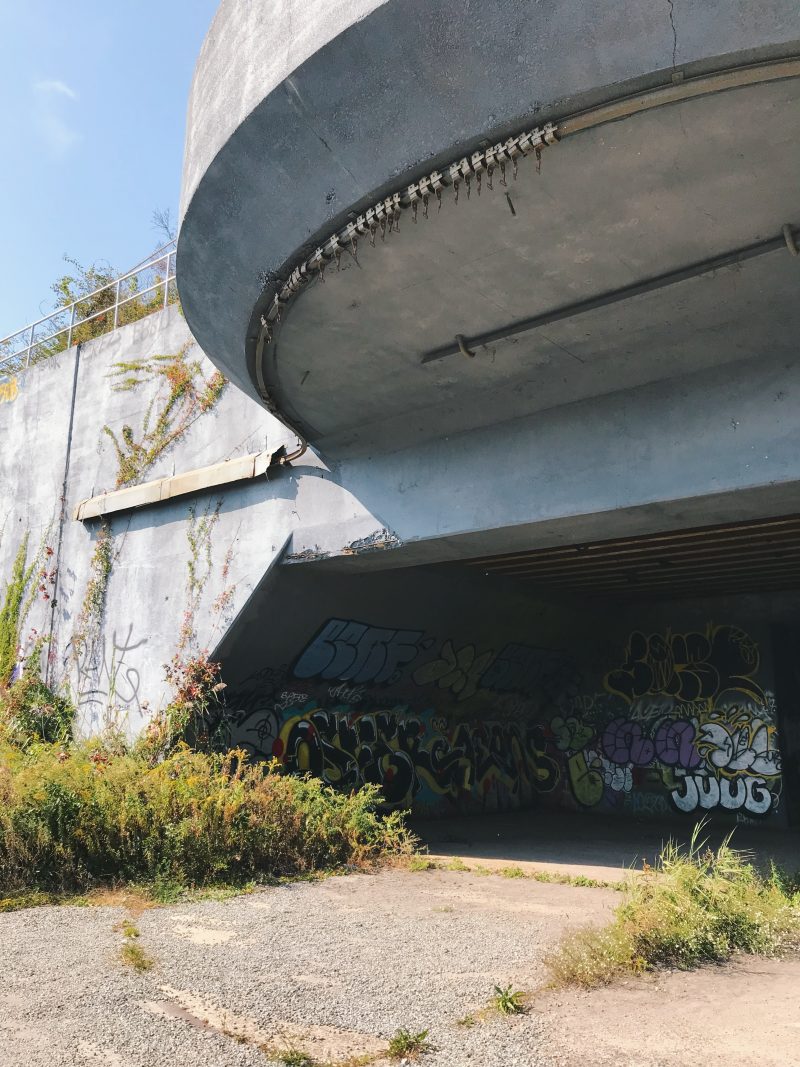
Throughout the decades, the bunkers were modernized several times as the technology of warfare evolved.
From above, the batteries would have been camouflaged by dunes and scrubby vegetation.
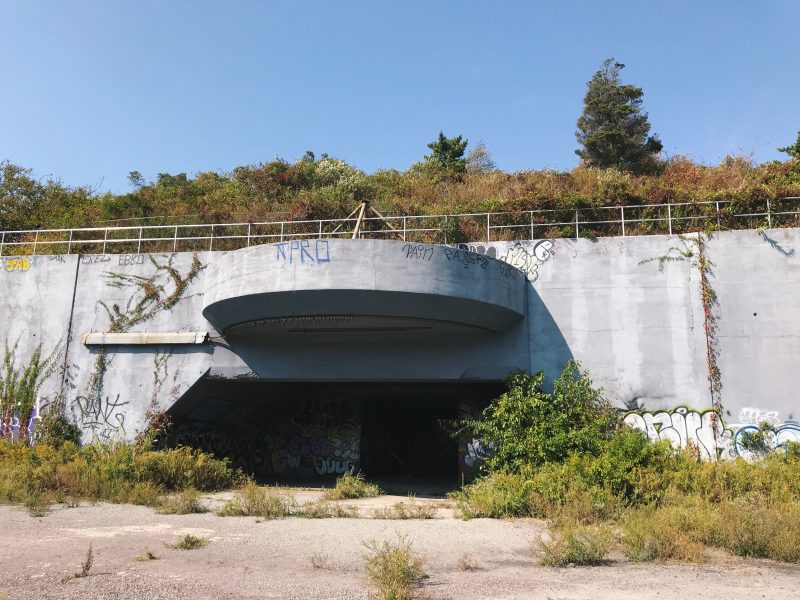
The domes were covered with earth and sand to resemble two round hills.
A railroad system shuttled heavy ammunition from the smaller magazine buildings nearby.
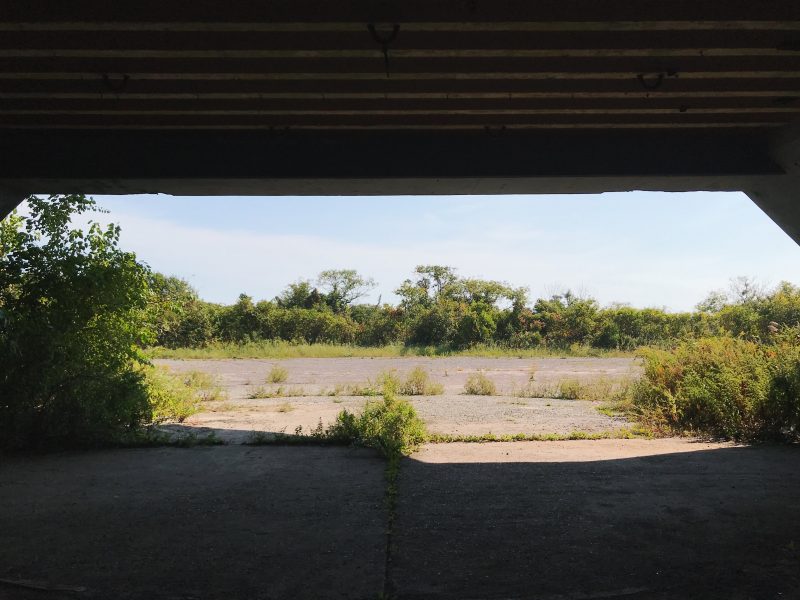
One of the 16-inch cannons once poked out exactly from here.
Years of layered graffiti can now be found under the round, UFO-like slabs that once covered the cannons and their carriages.
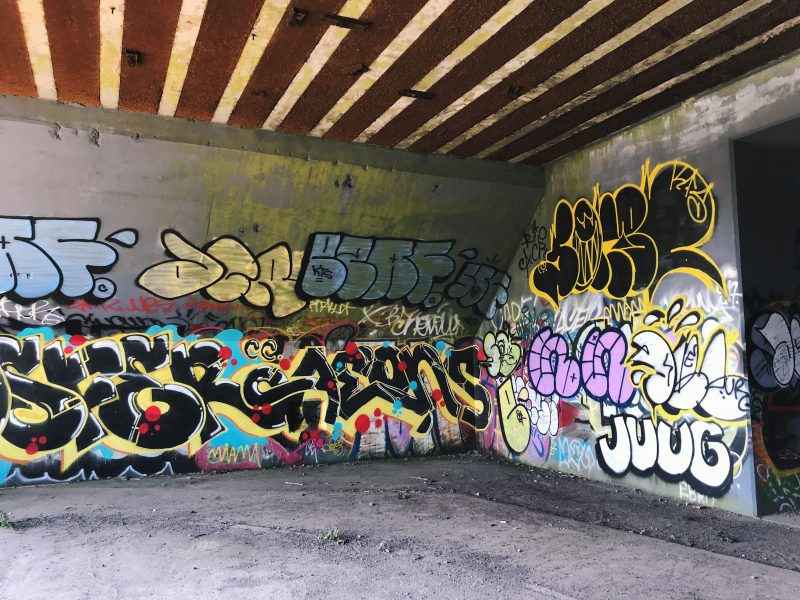
Some graffiti at Fort Tilden dates back decades.
The entrance gates to both Battery Harris structures are padlocked shut, but graffiti artists have squeezed through the rusty steel bars. Inside, short corridors lead to what was once a powder room and a control room.
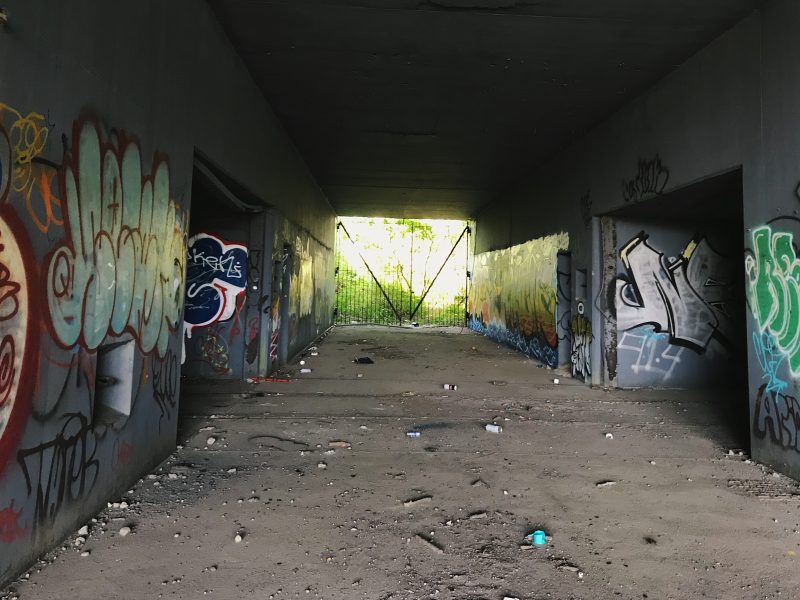
Four empty rooms are connected by the two bisecting corridors inside the casemates.
The imposing bunkers aren't the only traces of Fort Tilden's wartime past: A 2007 site inspection found that the soil still contained unsafe levels of contamination by munitions.
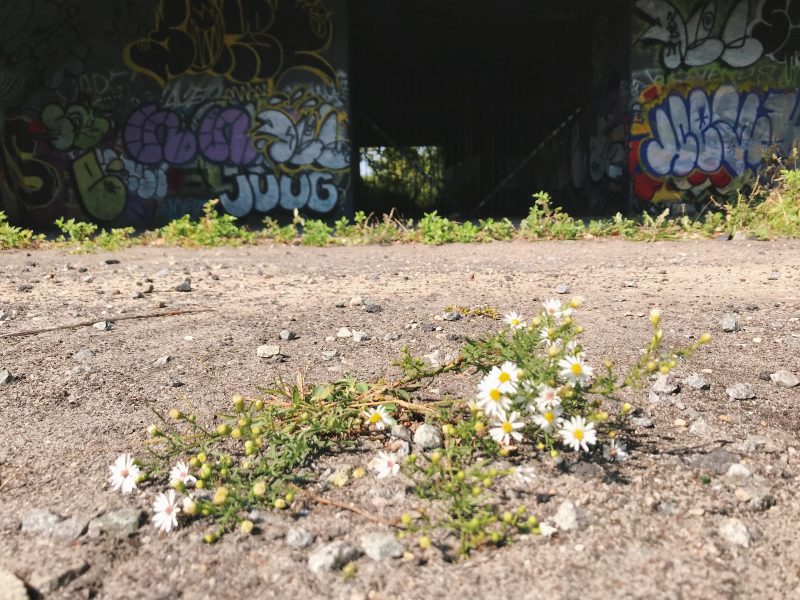
The inspection was conducted by the Defense Environmental Restoration Program, which conducts clean-ups of former and current military installations.
Not all buildings at Fort Tilden are preserved under the National Register of Historic Places, but the two concrete casemates, and many remnants of smaller bunkers and buildings, are. The battlements will continue to tower amidst the overgrown dunes, unbeknownst to most beachgoers.
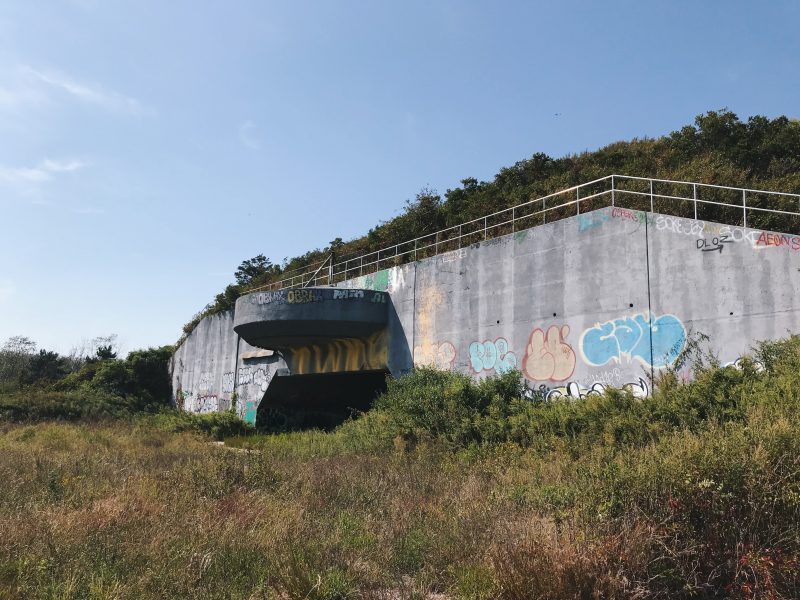
Those who wander from the beach are in for a treat.







